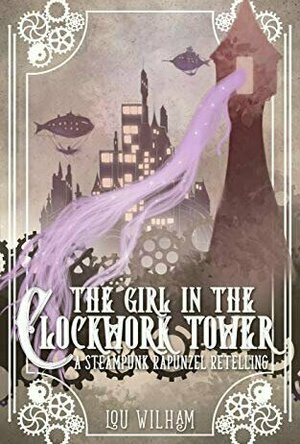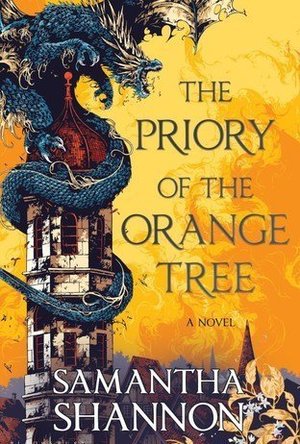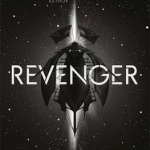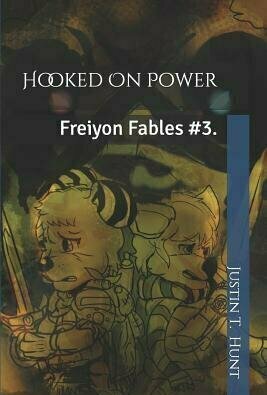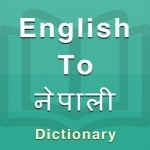
Nepali Dictionary Offline
Education and Book
App
NEPALI DICTIONARY Presenting the NEPALI DICTIONARY - One of the Most Compact, Feature-Rich &...

Chinese Dictionary Offline
Education and Book
App
CHINESE DICTIONARY Presenting the CHINESE DICTIONARY - One of the Most Compact, Feature-Rich &...
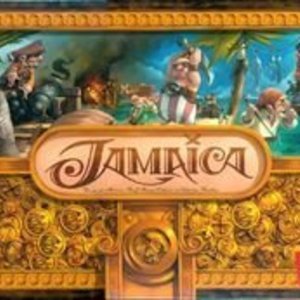
Jamaica
Tabletop Game
This is a pirate-themed tactical race game with player interaction and side goals (e.g. detouring...
Boardgames PirateGames GatewayGames RacingGames BeautifulGames

Radio Greece
Music and Social Networking
App
The best radio application Radio Greece is the simplest and most powerful application. Features: ...
Lottie disney bookworm (1056 KP) rated The Girl In The Clockwork Tower in Books
Aug 30, 2021
Dashing captain of an airship? Check.
Magic? Check.
Weird obsession with pineapples? Check!
The Girl in the Clockwork Tower is a steampunk Rapunzel-inspired tale full of adventure and magic and great, well-developed characters.
Persinette was brought to MOTHER headquarters at the age of 8 and has since been used as a seer, tracking the ‘Enchanted’ so that they can be captured by MOTHER’s agents and placed in concentration camps. 16 years later, Persinette, or Persi, doesn’t take the entrapment of her own kind lightly but is under constant threat from her controlling agent Gothel who makes it clear that once Persi is no longer useful to MOTHER, she will be disposed of.
Luckily for Persi, the Enchanted are not completely defenceless and the ‘Uprising’ have also noticed her talents. Captain Manu Kelii is tasked with recruiting Persi to their cause but can the charming airship captain protect the Seer from the formidable MOTHER?
Lou Wilham’s characters are so well developed you will feel as if you have known them forever. Persinette begins her adventure as a timid, downtrodden, lavender haired girl: used as an asset for as long as she can remember. However, by the closing pages, Persi is a survivor, wielding her new-found magic and is unwilling to be an “asset” for anyone but herself.
Despite Persi’s evolution from broken to badass, Captain Manu Kelii steals the show. Manu is a puppy dog, so eager to please and very confident in himself. When he finally receives a mission from the leader of the Uprising he is like a kid at Christmas and his bizarre obsession with pineapple provides both humour and an almost arrogant air about him. However, Manu’s clear adoration and care for Persi really cause him to grow as a character: this is potentially the first time Manu has worried for someone other than himself.
I would have liked a little more backstory from Manu, we know how he came to be on the ‘Duchess’ and we know him now but what happened in the meantime? It would be nice to have a little more insight into our pirate captain’s previous adventures.
Some reviewers have said this book is not a true Rapunzel retelling and I can see what they mean to a certain extent. I can certainly appreciate that the towns of Pascal and Maximus, the organisation Mother and agent Gothel do feel quite forced. However, Persinette was the “maiden in the tower” of literature before Grimm’s Rapunzel grew her first curl and when you think that Wilham’s Persi is imprisoned in a tower, desperate to explore the outside world but, most importantly, to discover who she truly is, you start to realise that the stories aren’t a million miles apart after all.
That being said, the cute Disney-esque details weren’t really needed, they certainly weren’t what made this story great: The Girl in the Clockwork Tower would have easily stood its own ground without any affinity to Rapunzel being made.
It shouldn’t need adding but sadly the lack of diversity in other novels means that readers find it refreshing and reassuring when LGBTQIA characters are included and Lou Wilham does not disappoint. Eddi, the leader of the uprising uses gender neutral pronouns and Benard and Owen are the cutest “gay dads” to Manu.
I really appreciated how these characters’ genders or sexuality were not under a spotlight: pronouns were used and relationships were explained, just as they were with Manu and Persi and that is just how it should be.
The Girl in the Clockwork tower is a gritty fairytale; complete with love, magic, villains, airships, concentration camps and a fair amount of alcohol on Manu’s part! Persi’s adventure sees her discovering her strength, her magic and maybe even finding love: this is one damsel who doesn’t need a man to save the day!
Thank you to Booksirens. I received an advance review copy for free, and I am leaving this review voluntarily.
RəX Regent (349 KP) rated Solo: A Star Wars Story (2018) in Movies
Feb 18, 2019
Where to start? Indeed, where to start with a background prequel focusing on one of the most iconic Star Wars characters ever, taking the ageing Harrison Ford’s characters to, well not so far beyond the age that we first met him back in 1977.
Recast with actor who brings very little Ford with him, apart from a few well practice smiles and other expressions here and there, this is a reinterpretation of the character, in this case as a naive and wimpy version, maybe even soft, is not the part for Alden Ehrenreich.
The Character arch of Han Solo in the original trilogy was his redemption from a selfish, self-assured space pirate to a man who could recognise and fight for a cause bigger than himself. But according this haphazard prequel, he was already a big softy before her learns the harsh realities of life, only he doesn’t, not really.
He just learns to be a little more cynical and to smirk his way through every situation with his lucky die and everything turns out okay for him. Ehrenrieich done not bring an ounce of the gravitas or charisma of Harrison Ford, as this film, which had to be almost entirely re-shot with Ron Howard taking the helm after The Lego Movie directing due Chris Miller and Phil Lord where unceremoniously fired after “not getting it”, apparently, shoe horns as much of the token events of Solo’s pre-rebellion life into its two and bit hour run time.
Ron Howard; A few hits and plenty of misses. Willow (1988) springs to mind. Not only was Willow Lucas’ attempt to begin and new fantasy trilogy after the Star Wars Saga was completed, it was micro directed by George Lucas as Ron Howard took the credit. And this has a lot of the hallmarks of Willow.
In short; A poor mans Star Wars. Hammy scripting and at times acting, the story is all over the place, with shallow characterisations, poor exposition, haphazard pacing and the action is actually quite hard to follow. Just please, give us ONE decent shot of the Millennium Falcon that we can keep up with and actually see, especially as it has been altered so much from the icon version that we all love. Maybe we’re getting bored of the same ship after 40 years? Maybe we all need to go out and by a new version?
Toyetic… anyone?
Instead everything of interest is speeding across the screen and the boring stuff is left to linger. And there was a level of boredom here. Incredibly predictable plotting, simply going through the motions of a no stakes story. But it does feel as if they shoehorned a larger narrative in there, with introduction in the final act of the rebellion and an old villain returns with a new legs, but by the time what should have been an earth shattering twist appeared, it wasn’t really interested, especially if you know the The Clone Wars or Rebels.
One major plus note though, Donald Glover aced Lando Calrissian, to such an extant that I wish this movie was actually called Lando: A Star War Story rather than Solo, because there’s no doubt that Glover brought so much more Billy Dee Williams and built on it, than Ehrenreich did for Ford’s.
As well as the subtle and well conceived plotting around Lando’s female droid, L3-37 (Phoebe Waller-Bridge) who may well be the ‘Old girl’ referred to by both Han and Lando during in the original trilogy when they speak to the Falcon, whilst shining a light on the deliberately ambiguous nature of droids in the Star Wars universe. In short; are they sentient or not? But this is not Star Trek so we do not really need an answer to that… do we?
Overall, I want to say that this was missed opportunity but in truth, it was not. It was waste of time. A story that did not need to be told with script that did not know what say. Clearly, they were aiming for a Guardians Of The Galaxy (2015), unaware that the secret of that surprise success was that it tapped in to the retro Star Wars vibe by NOT being Star Wars. And with little expectations.
Here they were playing with one of the biggest guns in modern film history and in my opinion, it blew up in there faces.
Goddess in the Stacks (553 KP) rated The Priory of the Orange Tree in Books
May 3, 2019
So the basic premise of this world is that The Nameless One (some gigantic evil dragon) was locked away a thousand years ago, and all his minions with him. The exact details of how and who did it have been mostly lost to history. It’s said that as long as the House of Berethnet rules Inys, he’ll never rise again, and Berethnet queens always have one child, a daughter. The current queen, however, is unwed, and minions of The Nameless One have begun rising, and in fact have conquered a few neighboring nations. We have three main factions of countries; The East, who have dragon riders, but make a distinction between their dragons, who are aquatic and identify with the stars, and the evil minions of The Nameless One, who are full of fire. Then we have Virtudom, which is headed by Inys, and is a coalition of countries who have made a religion of the Knightly Virtues. This is the West, and they make no distinction between the draconic servants of The Nameless One and the water dragons of the East. This has forced a split between the West and the East, because Virtudom won’t have anything to do with countries that have anything to do with dragons, because most of what they see is the third faction – the Draconic countries. These are countries conquered by minions of the Nameless One, and they are full of chaos, fire, evil, and plague.
This is the world the book opens on. Most of our main characters – Queen Sabran, her handmaiden Ead, the dragonrider Tané – are women, but we also have Doctor Niclays Roos, an alchemist, and Lord Arteloth Beck, a friend of the Queen. In this world, women are just as capable as men, and are treated as such. There are female knights, and same-sex relationships are just as ordinary as opposite-sex ones. There is a bit too much moral emphasis placed on monogamy/sex within the bounds of marriage, but I guess that’s “Knightly Virtue” for you. Skin color is only mentioned a couple of times, but I seem to remember Lord Arteloth being described as very dark-skinned, and Ead as golden-brown. Rather nice to see a fantasy NOT all caught up in racial and gender differences. Not to say there isn’t a fair amount of bigotry, but in this book it’s based pretty much solely on nationality and religion. And when the biggest sticking point is “do you like evil dragons or not” that kind of makes sense!
I think the only thing I didn’t like about this book was its size. It’s unwieldy to read, at over 800 pages! I’m not sure why they didn’t break it into a duology. Regardless, if you have the choice, I’d read it on Kindle. It would be far easier to handle. I’m not complaining about the amount of text, mind you. Just the sheer physical size. I can’t imagine the story being told in less time. There’s So. Much. Here.
This book goes from Queen Sabran’s court to the dragonrider academy in the East, to the draconic kingdom of Yscalin, to the Abyss where the Nameless One sleeps. We see glittering courts, hidden islands, sweltering tunnels through volcanic mountains, and deep valleys with secret magic trees. We battle wyrms and cockatrices, swim through endless seas with dragonriders, sail through storms with pirate crews, and navigate the trickiest of diplomatic matters with courtiers. The Priory of the Orange Tree paints an elaborate, incredibly complex world and I am absolutely here for it.
Okay, so one tiny quibble – while I liked the romance, I feel like it started kind of oddly. I didn’t see any reason for the initial spark. From there, it progressed perfectly, but I just didn’t get the beginning.
This book has multiple queer couples! There’s at least one same-sex couple mentioned as attending a party; Doctor Roos spends a lot of time mourning his dead lover, and there’s the lesbian romance between a couple of main characters. And one character has at least strong affection for a man before falling in love with a woman; I think she was in love with both. No trans or ace rep, but plenty of gay, lesbian, and bi!
This is hands-down the best book I’ve read so far this year. It took me three days – it’s a big book – but it is absolutely fantastic.
You can find all my reviews at http://goddessinthestacks.com
It was my first ever Space Opera and it has opened my eyes to a whole new genre.
It was my first ever Space Opera and it has primed my taste-buds for more.
It was my first ever Alastair Reynolds and now I want more.
Revenger itself was amazingly well written. As mentioned above this was my first book from Alastair Reynolds and it was just the kind of book I could get into again and again; the writing style flowed with a shocking ease and the plot line was very Firefly-esque with a hint more action and a smidge more ‘oh-shit’ factor.
Revenger follows the story of Adrana and Arafura Ness – two sisters from Mazarile whose sick father had made some very poor choices in business – as they embark on a journey into space to end all journeys.
It begins with Adrana convincing her younger sister Arafura to escape into Neural Alley for a reading by Madam Granity. There’s aliens, robots and weird looking men with bad attitudes and then there’s Captain Rackamore. Pol Rackamore is the captain of the Monetta’s Mourn – a sunjammer spaceship – and he’s in need of a new Boney on his ship as his current one is getting too old to ‘read the bones’ and I mean that in the literal sense of the word.
Adrana convinces Cap’n Rack to take both her and Arafura on board the Monetta in the position of new Bone Readers (with the aide of Cazaray the current Boney) and that is where the story really begins. We’re introduced to the rest of the crew and the Monetta sails off into the Empty in search of baubles. As they sail towards their first bauble Arafura becomes a lot closer to the rest of the crew while I feel that Adrana is doing her best to stay away from them all even though she’s front and center.
Story progresses and little hints are dropped about Bosa Sennen and Cap’n Rack’s long lost daughter. There’s several shocking deaths, a mad woman, a kidnapping or two and a young girl bent on revenge.
Around the mid way mark Arafura changes, subtly at first and then a lot more drastic and she becomes Just Fura. This is where the story becomes a lot darker and a lot less like Firefly and a lot more like the Firefly from hell; the second half of this book is based around Fura getting Revenger on Bosa Sennen for what she did and the things that Fura puts herself through to get where she needs to be? She started off as a little timid and shy but after the 50% mark she changed completely and became hard and unyielding.
You know how they say that the future is bright? That brightness is swallowed by the Empty and the future is dark and full of terrors (oh yeah I went there) there’s a doctor with a God complex, a father with a total lack of regard for his daughters, a totally bad ass soldier robot with logic barricades and all sorts of other people.
I think I loved the world building the most about Revenger it was such a smooth transition from place to place and from time to time that it was almost seamless; my second favourite thing was the characters – hands down they were some of the best characters I’ve ever read and I’d love to see if AR takes this book any further as it was seemingly left open for another book but we shall see.
The book gave off a distinctly pirate feeling but with the space element it felt more like Firefly than it did Pirates of the Caribbean which as a fan of both was saying something. Pirates sailing the high skies rather than the high seas! Some of the characters left much to be desired – Bosa, Adrana and Dr Moonface I’m looking at y’all – but the likes of Rack, Prozor and Paladin more than made up for them.
The dialogue was great and the story wasn’t overly scientific which sometimes can be an issue for me, I like my books to be a little less science fact and a bit more science fiction but with Revenger, I felt like AR was giving us regular folk an explanation without going overboard on the description.
Alice (12 KP) rated The Copper Promise (The Copper Cat, #1) in Books
Jul 3, 2018
I’m a rare 5 star reviewer and a book has to tick every single tiny little box for me to even consider going past 4 stars. I’ve also never picked up a sample and ordered a book within 24 hours, I usually sit and think about it for a while but The Copper Promise was one of those books. I was about 70 pages in to The Copper Promise when I bought its sequels The Iron Ghost and The Silver Tide. This never happens – ever.
From the get go, Jen Williams’ characters and world building was on point. The story follows what will eventually become The Black Feather Three – Wydrin of Crosshaven, Sir Sebastian Carverson of Ynnsmouth and Lord Aaron Frith of The Blackwood:-
Wydrin of Crosshaven is a foul-mouthed, crass, violently aggressive and sarcastic pirate-cum-sell-sword and she’s AMAZING!
Sir Sebastian Carverson of Ynnsmouth is a disgraced Knight of Ynnsmouth, sword-sworn to the god-peak Isu turned sell-sword for hire with a heart of gold.
And last but certainly not least Lord Aaron Frith of Blackwood, last surviving heir of the The Blackwood, tortured soul (and I mean this in the literal sense) and one confused man with a neat newly acquired trick.
∞
Frith has hired Wydrin and Sebastian and a weird little fella called Gallo to take him to The Citadel as a means to exact revenge on the people who gravely injured him and murdered his family. Gallo goes on ahead as he’s impatient and things go a little belly-up for him; Frith, Wydrin and Sebastian go to the Citadel, go exploring in the creepy castle and see Gallo who they assumed was dead, the trio of adventurers unknowingly unleash a god in the form of a dragon which in turn unleashes several far-ranging ramifications – Frith absorbs a lot of magic and knowledge, Sebastian almost dies because of Gallo’s betrayal but pulls through because of a mystic connection he forges at death’s door and The Copper Cat goes about her business.
This Citadel invasion and ultimate unleashing of a long-believed dead god sets the story up nicely for its onward and upward momentum. Frith absorbs the power he was searching for in the lake hidden at the bottom of the Citadel and becomes a force to be reckoned with (eventually) but not only do they release a dragon they also release her brood army – neat green and golden dragon-hybrid things with a connection to both Y’Ruen (the dragon) and Sebastian – cue his nightmares.
The book as a debut was stunningly well written with characters that were neatly rounded off with few cliffhangers and a nicely written flow and mixture of present and past tense. The characters (particularly Wydrin) were superb and I couldn’t get enough of her utter crassness and her unrelenting torment of Frith – brilliantly written.
∞
I really liked the fact that Jen Williams also gave us chapters from the point of view of the brood army as they traverse Ede destroying any and everything. She shows us the stark contrast of them being a number (The Thirty-Third) and of them becoming a unique being (Ephemeral) with their own thoughts and feelings – some remained purely numbers but a large amount of them became individuals and “broke” from the brood.
There have been some mixed reviews on this book but my opinion is this book was amazing. An outstanding read of amusing proportions where plenty of banter, adventure, magic and mayhem abound. Although the ending closes off some individual story arcs it also opens the door to many more which continue in the next book – my overall feeling towards The Copper Promise was along the lines of “Please don’t leave me!” and “Oh dear god I need more. Right now.”
As mentioned above I bought the next two instalments and I’m 150 pages through the second one and it is just as good as the first one! I can’t wait to see where this story goes!
Night Reader Reviews (683 KP) rated Freiyon Fables: Hooked on Power in Books
Jan 9, 2020
Freiyon Fables: Hooked on Power by Justin Hunt is the third and I believe the final book in the Freiyon Fables series. Right from the start, the book promises to answer some questions that I had from the start of the series. I have noticed some inconsistencies in formatting or writing style, such as the first book being broken into three separate parts, the first book being one whole book, and now the third being broken apart again. However, I did not notice any problems with the timeline between the three books.
The story starts out with a letter to the reader from an unnamed author (that is until the very end). This author claims that the reader would not recognize him or her from previous stories about Freiyon but intends to “explain the many different mysteries of the World of Freiyon”. It then starts with the story of some pirates who find themselves in Freiyon by mistake. These pirates then capture and torture poor Quasapoor (who you may remember was evil in a previous book) until he goes insane. They then run into Sybil and Helen Rochester and the creation of the Rochester Runes is explained as well.
Adam, a young boy who heard of Freiyon from his mother then and his battle with Captain Liberty (an evil power-hungry pirate) becomes the main focus of the story. He soon finds that time runs differently in Freiyon from the human world and the events his mother told him about are yet to happen. Adam is even present for the creation of Lord Libertas, but I am not going to ruin how that happened for the curious reader. As Adam travels Freiyon and the surrounding lands the reader also learns about how Freiyon itself came to be along with the Wise One and Lightning Tail Island. Will Adam with the help of some new friends and some well-known favorites be able to protect Freiyon from Captain Liberty or will Freiyon be destroyed once and for all?
What I liked best was how the book answered major questions that arose during the first two books, even if some of the explanations seem a bit far fetched. I really enjoyed the appearance of Adam as I had been looking forward to finding out his identity for quite some time. My main problem was with the time difference between Freiyon and the human world because it made things really confusing. I don’t really understand how Adam could even be in Freiyon before his mother and the events she tells him about, even if it was because of a spell gone wrong. Time travel always gets me confused. Also Adam frequently reminds himself that he is in Freiyon’s past and if every time he dose that is mixed with all the times the story backtracks over what a character just did or what happened in a previous book about a third of this book could be completely removed.
The target readers for this book changed a bit from the previous two books in this series. This third edition to the Freiyon Fables is directed more towards middle school readers. While previous Freiyon Fable books may have been appropriate for even some elementary students I feel as if they would get bored after the first one hundred pages or so of this one. Staying consistent with the first two books I rate this one as a 2 out of 4. Originally this final book was going to be given a three for explaining some of the strange things that happened in the first two. However, because of all the repetition (entire paragraphs and pages seemed directly taken from one of the first two books) and how it felt like it was dragging for the final third of the book, I felt like a two was better deserved once again.
https://www.facebook.com/nightreaderreviews
